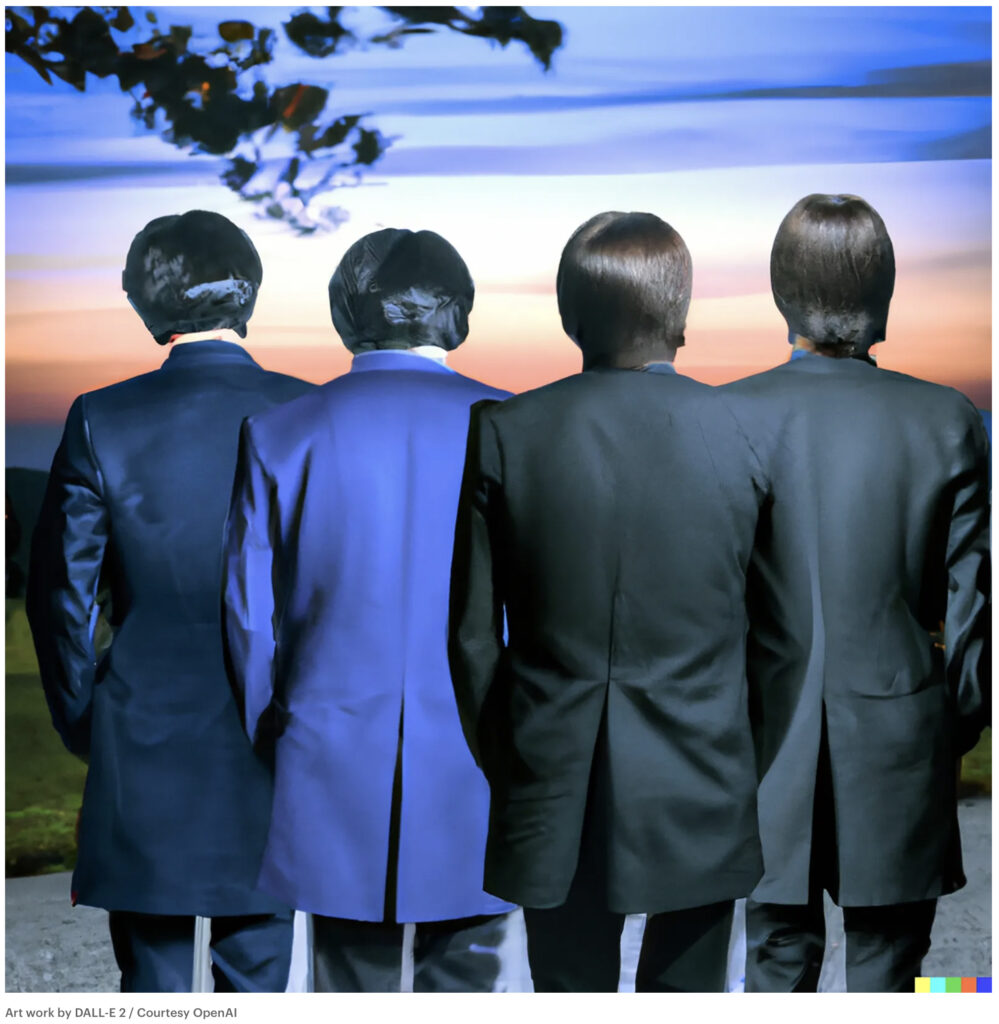I swear, if I see another article anthropomorphizing/deifying/demonizing AI, I will… well, not read it, I guess. This trendlet is really getting tedious.
Adam Gopnik has something in the New Yorker this week about AI, which isn’t completely wrongheaded but treats the extruded art-product of AI far too seriously.
He contrasts the ineptitude of chatbot writing with the more impressive output of artbots, saying “asked to make an album cover <for the Beatles> in Magritte’s manner, dall-e 2 responds in ways that are often arresting, even witty.”
This is the example he provides.
If this image is witty, I guess I don’t get the joke. It looks like four separate images of guys that have been badly photoshopped into the background of an inspirational poster, two of them made by someone who doesn’t understand how human hair works, all of them made by someone who doesn’t know how human legs work. One misses the clarity and pseudo-realism that lends Magritte’s surrealism its ironic power. More importantly, we’re missing the floating apple or the bowler suspended in midair above a suit—the jarring element that makes every Magritte painting into a visual koan.
So-called AI continues to be a Rorschach blot for the people looking at it. But I’m not sure what most people have to say is of interest to anyone except their analyst.

